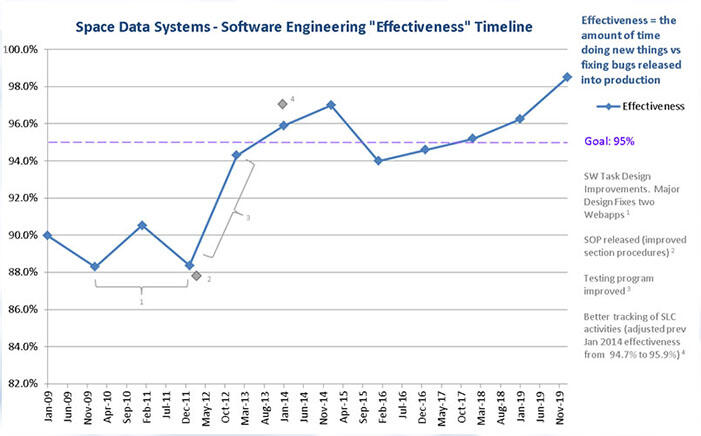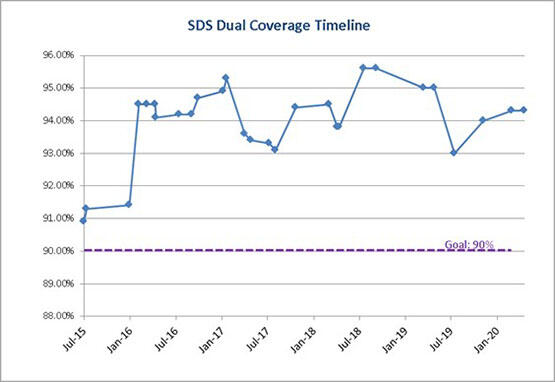The Clarity™ Plug & Play Process Architecture is an open, adaptable and scalable process architecture, consisting of components, plugins, and standards, that helps maximize production and quality with minimum staff.
Developing products in today’s world can be a challenging activity. Demand for engineers is high; product development continues to be an activity susceptible to inefficiency, risk and quality issues; and product support faces significant challenges in a competitive market where technology continues to expand, and engineers and technical staff can easily move between companies.
The Space Data Systems (SDS) software engineering organization produced 36 production software products over a 22-year period for the National Aeronautics and Space Administration (NASA) and the European Space Agency (ESA) with a staff averaging 6 software engineers and testers. The Clarity process architecture was created during that time. With Clarity, SDS raised its average “effectiveness” for the past eight years to 95%, meaning that it spent 95% of its time creating new functions or expanding existing functions, as opposed to fixing bugs
Clarity maximizes productivity and minimizes development risk by implementing just the right amount of process by the right person at the right time – the “Goldilocks” approach to process management. Through a system of tool-independent checklists and forms, Clarity focuses on mitigating error propagation through the development lifecycle, leveraging the product lead as the process executor, and leaving the development team to do what they do best – produce quality products.
- Clarity is an open process. It was delivered to NASA as part of several NASA projects and is part of the public domain.
- Clarity requires no software purchases - it is a tool-independent process that allows product leads to choose the tools that work best for their organization.
- Organizations may use individual Clarity components or combine components as appropriate to enhance their product development process.
- SwRI offers Clarity training courses and consulting support.
Effectiveness
With Clarity, the Space Data Systems (SDS) organization raised its average effectiveness for the past eight years to 95%, meaning that SDS spent 95% of its time creating new functions or expanding existing functions, as opposed to fixing bugs.
Dual Coverage
Clarity is responsible for the Space Data Systems (SDS) organization’s dual-coverage, or “maintainability,” rating of 95%. This means that there are at least two people with sufficient skill to support 95% of the 107 application technologies and staff skills used on software projects maintained by SDS.
Examples of products produced using Clarity include:
- Project Information Management System (PIMS)
- Progress Integrated, Web-Based Manufacturing Software
- NASA Juno Science Operations Center
Or call Robert Thorpe at +1 210 522 2848.



